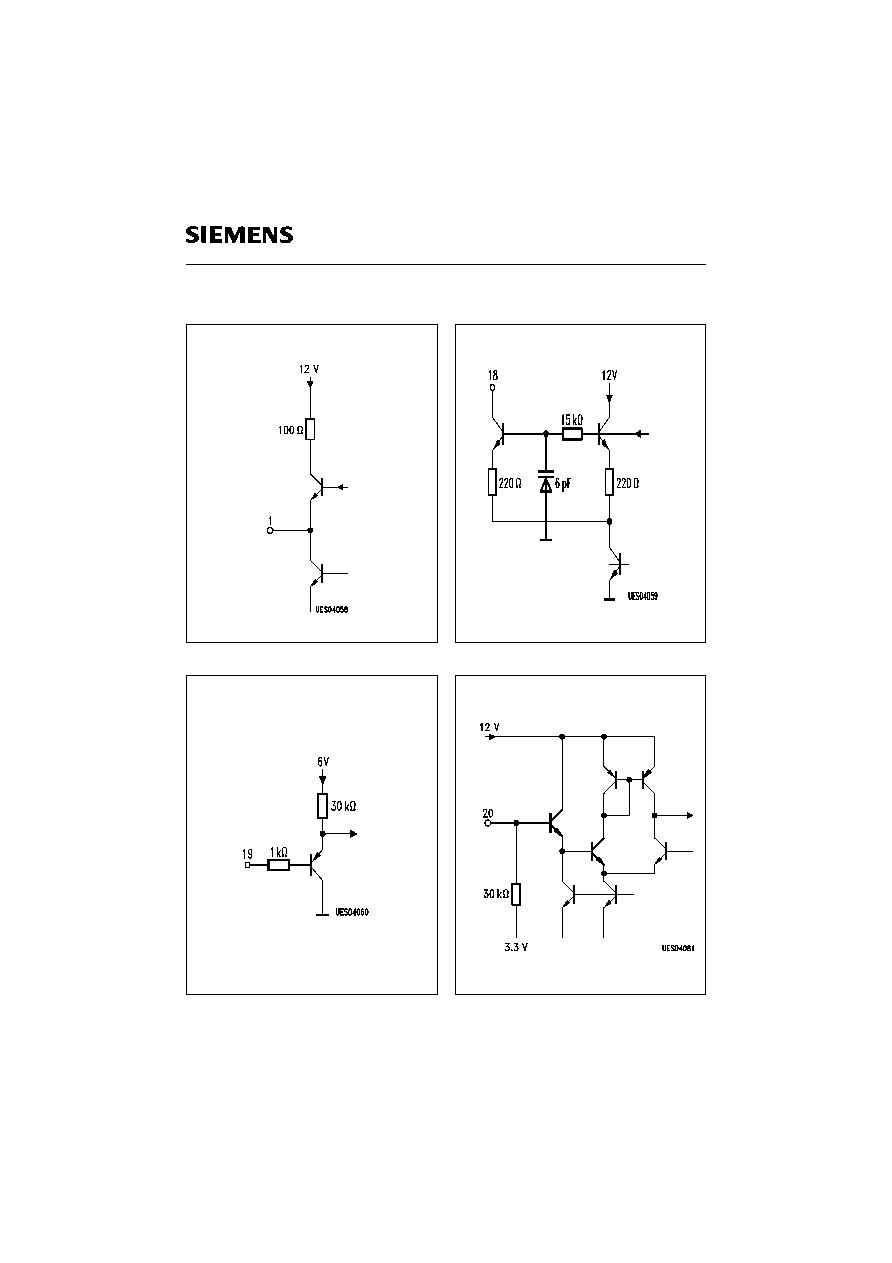
The video circuit for a satellite application consists of a voltage controlled AGC-amplifier, driver for
two external de-emphasis networks, followed by a three-stage switch. An additional baseband
output is available via a driver. The output signal of the video switch is applied to a video clamping
circuit, this clamping circuit removes the energy dispersal signal from the video signal. The clamped
signal is applied via a video switch to the SCART-output.
Circuit Description
The demodulated FM-satellite video signal is fed via a buffer amplifier to a gain controlled amplifier.
The gain control is done using an external applied DC-voltage. The output signal of this amplifier is
used to drive three separate signal pathes. First of all the baseband is fed via a high pass filter with
a cut off frequency of approx. 4 MHz to the input of a SAT-TV-sound processor, e.g. TDA 6160 X.
A second output with a buffer amplifier is used to drive two external de-emphasis networks. After
passing through the de-emphasis networks the baseband signals are fed into two inputs of the de-
Type
Ordering Code
Package
TDA 6151-5
Q67000-A5175
P-DIP-20-1
TDA 6151-5X
Q67000-A5074
P-DSO-20-1 (SMD)
Satellite-Video IC
Preliminary Data
Bipolar IC
TDA 6151-5
TDA 6151-5X
Features
q
Adjustable gain for different FM deviations
q
Video buffer and special baseband output for the sound
processor SDA 6102-5X are available
q
Clamping circuit for elimination of "Energy Dispersal"
signal
q
Built-in video switch for external applied video signal
q
Application in satellite receiving systems.
Semiconductor Group
1
04.95
P-DIP-20-1
P-DSO-20-1

Semiconductor Group
2
emphasis selector switch. The third output of the gain controlled amplifier has a direct connection to
the de-emphasis selector switch. This allows the selection of the sufficient frequency response of
the de-emphasis network or a linear frequency response by passing the de-emphasis networks.
The output signal of the de-emphasis selector switch is fed separately via two driver amplifiers to the
baseband 1 output and to the baseband 2 output. This baseband 2 output is fed via an external low
pass filter to the input of the energy dispersal clamping circuit. This circuit removes the energy
dispersal signal from the baseband signal. The clamping circuit can be operated with an internally
generated clamping signal or a clamp pulse applied to the IC from an external source.
The internal generated clamping pulse can only be used if the incoming baseband signal is a
standard CVBS-signal. The clamping pulse is then located in the H-sync pulse period. The impulse
width is approx. 2
�
s. The external clamping pulse must be active low. The timing of the pulse is not
critical. The clamping level used in conjunction with the video signal can be selected according to
the operation mode (CVBS- or MAC-mode). The clamping level differs by 1 V. The baseband output
(pin 16) and CVBS-output (pin 14) require 75
line drivers implemented as internal drivers
followed by a PNP-emitter follower.
Pin Configuration
(top view)
P-DSO-20
P-DIP-20
TDA 6151-5
TDA 6151-5X




